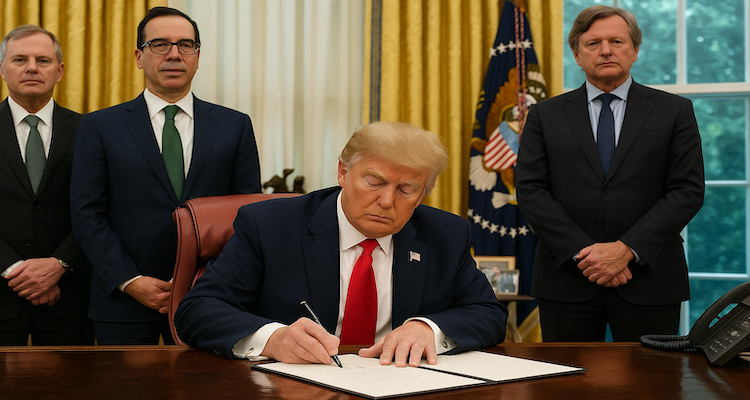Silent Wings, Smart War: India’s AI Drones
New Delhi, UK – India is rapidly accelerating its push into advanced stealth and autonomous projects within its military drone sector, a strategic pivot under the “Make in India” and “Atmanirbhar Bharat” (Self-Reliant India) initiatives. With an ambitious goal to become a global drone hub by 2030, the nation is not just building drones but is meticulously crafting a
sophisticated defence ecosystem geared towards futuristic warfare. This comprehensive strategy aims to bolster national security and significantly reduce India’s historical reliance on foreign defence suppliers. Defence Minister Rajnath Singh recently declared, “Today, when Indian drones fly, neither the US nor China will be able to detect them – this is a significant achievement,” underscoring the nation’s soaring ambitions.
Silent Sentinels: India’s Indigenous Stealth Prowess
India’s long-term defence strategy is firmly focused on developing stealth and high-autonomy systems, with several groundbreaking indigenous projects taking centre stage:
Autonomous Flying Wing Technology Demonstrator (AFTD): This sleek UAV boasts stealth capabilities and a crucial ability to autonomously land without requiring ground infrastructure, marking a significant stride towards the future of aerial combat.
Archer-NG & Ghatak UCAVs: These medium-altitude and stealth drones are currently under development, designed to reduce foreign dependence and extend India’s reach for advanced surveillance and strike missions. The Ghatak stealth combat drone is particularly highlighted as a key project fortifying the indigenous military drone ecosystem. The Defence Research and Development Organisation (DRDO) has also demonstrated its capability in designing large UAVs with indigenous sub-systems through projects like the Stealth Wing Flying Testbed (SWIFT) and the Rustom series, though operationalisation remains a challenge for some large UAVs.
HAL CATS (Combat Air Teaming System): This visionary system, led by Hindustan Aeronautics Limited (HAL) and NewSpace Research, envisages manned fighter jets operating collaboratively with swarming UAVs and stealth Unmanned Combat Aerial Vehicles (UCAVs) for deep strike missions and achieving air dominance. This initiative explicitly focuses on Collaborative Autonomous Technologies for Swarms (CATS) and Manned Unmanned Teaming (MUM-T) concepts.
MBC2 Swarm Drones: Developed by NewSpace Research, these AI-powered, palm-sized drones are engineered for autonomously seeking and neutralising enemy soldiers, signalling a new era in infantry warfare. The broader development of drone swarms, enabling multiple drones to operate in coordinated missions for surveillance and reconnaissance, is a growing area of focus, integrating Swarm Intelligence as a key feature of modern defence drones.
Drishti 10 Starliner & Johnnette JF-5 MALE UAV: The recent delivery of the indigenous medium-altitude long-endurance drone, Drishti 10 Starliner, to the Indian Navy underscores a commitment to enhancing intelligence, surveillance, and reconnaissance (ISR) capabilities. Similarly, the Johnnette JF-5 MALE UAV is another example of India’s forefront position in military drone technology development. Modern defence drones are increasingly equipped with comprehensive ISR capabilities for real-time intelligence and situational awareness.
The AI Revolution: Drones with Minds of Their Own
Artificial Intelligence (AI) is rapidly transforming drone systems, enabling enhanced navigation, obstacle avoidance, and autonomous decision-making. These AI-powered drones are designed to fly, target, and return with minimal human intervention. This integration significantly boosts their capabilities in real-time decision-making, object recognition, and target identification, providing a deeper understanding of their operational environment. The development of autonomous systems directly reduces the need for human input, thereby improving overall operational efficiency and productivity.
A significant development saw India’s defence ministry successfully trial an advanced US-built AI platform for the autonomous control of drones in mid-August. This platform, developed by Shield AI, allows beyond visual line of sight (BVLOS) UAVs to operate effectively even in areas where communication frequencies, including GPS, are blocked. Such demonstrations are crucial for India’s rapid adoption of next-generation capabilities that strengthen national security and foster indigenous defence innovation. The ‘Nova 2’ drones were used for this trial, conducted in Himachal Pradesh. Furthermore, the Indian Air Force is also considering similar indigenous AI platforms developed by the DRDO.
Policy Thrust and Defence Atmanirbharta
India’s ambition to become a global drone hub by 2030 is supported by a robust policy framework and significant financial commitment. The nation’s defence production reached a record ₹1.27 lakh crore in FY 2023-24, marking an impressive 174% increase since 2014-15. Notably, 65% of defence equipment is now manufactured domestically, a stark contrast to previous import dependencies. Defence exports have also shurged, reaching an all-time high of ₹21,083 crore in FY 2023-24, a 30-fold increase in a decade, with exports to over 100 countries. India aims for ₹3 lakh crore in defence production and ₹50,000 crore in exports by 2029.
Key initiatives driving this growth include:
Innovations for Defence Excellence (iDEX): Launched in 2018, iDEX fosters innovation by engaging MSMEs, startups, and academia, providing grants for innovative technologies. As of February 2025, 549 problem statements have been opened, involving 619 startups and MSMEs, with 430 iDEX contracts signed.
Acing Development of Innovative Technologies with iDEX (ADITI): This sub-scheme supports critical strategic technologies, including autonomous weapons, artificial intelligence, and quantum technology, offering grants of up to ₹25 crore to innovators.
Technology Development Fund (TDF): Another scheme bolstering technological self-reliance.
MAKE Projects: Categorised into MAKE-I (Government Funded), MAKE-II (Industry Funded), and MAKE-III (Manufacturing through Transfer of Technology), these projects promote indigenous design, development, and manufacturing. As of March 2025, 145 projects have been undertaken, involving 171 industries.
Defence Industrial Corridors (DICs): Established in Uttar Pradesh and Tamil Nadu, these corridors offer incentives for defence manufacturing investments, attracting over ₹8,658 crore in investments and aiming for a potential ₹53,439 crore.
Defence Minister Rajnath Singh has emphasized that drones are now a crucial part of defence policy, with India designing and manufacturing them domestically, asserting that self-reliance forms the foundation of India’s defence strength. This commitment was further highlighted during “Operation Sindoor,” where modernised forces, including precision-guided munitions and loitering munitions, were deployed in response to a terror attack, showcasing an “Atmanirbhar India” and the innovation of its scientists and youth.
Challenges and the Path Forward
Despite remarkable progress, India’s journey to full “Atmanirbharta” in drone technology faces notable challenges. These include the absence of a dedicated nodal ministry for drone technology, a continued reliance on imported critical components, and the need for more initiatives to develop emerging technologies like Unmanned Traffic Management (UTM) and Urban Air Mobility (UAM). Operationalisation and induction of indigenously developed defence UAVs have also been a challenge, requiring robust plans, funding, and timely approvals.
Cybersecurity concerns loom large, with drones potentially exacerbating vulnerabilities to cyber-attacks and electronic jamming. India’s current cybersecurity frameworks are considered underdeveloped compared to adversaries, with a need for a National Defence Cyber Command (NDCC) and AI-based defence strategies. Bureaucratic delays in procurement, insufficient R&D budget allocation (DRDO receives only 3.94% of the total defence budget), and challenges in fostering robust public-private collaboration also impede progress. While the private sector contributes 21% to total defence production, traditional public sector dominance and hurdles for private players persist.
To overcome these hurdles, India must prioritise investing in emerging technologies like AI, quantum computing, and autonomous systems, establishing dedicated research hubs, and fostering collaborations with global tech companies. International collaborations, such as the Indo-US Initiative on Critical and Emerging Technologies (ICET) and the Indo-US Defence Acceleration Ecosystem (INDUS-X), are seen as crucial for accessing higher-tech innovations and fostering joint IP creation, though careful safeguards are needed to prevent technology transfer to adversaries. The government also advocates for integrating AI-based defence strategies into cybersecurity frameworks and establishing a National Defence Cyber Command (NDCC) to protect critical military networks.
India’s proactive policy support, including schemes like iDEX and ADITI, coupled with a strong commitment to indigenous R&D and strategic collaborations, is positioning the country as a key global player in advanced drone technologies and a manufacturing hub by 2030. The nation’s armed forces are increasingly relying on drones as “critical force multipliers” to enhance operational effectiveness, accuracy, and strategic posture in diverse and challenging environments.
Also Read: The Rise of AI Companions: Do Digital Friends Make Us Lonelier?












